Wind Cave National Monument, SD, July 2025
We needed to test the time to get to Wind Cave National Monument to make sure we would leave in time for our cave tours next week. To do this, we planned a trip down to Wind Cave to go hiking. Based on what Kate read, the Wind Canyon Hiking Trail was supposed to have a lot of birds and no Poison Ivy. Well, one out of two ain’t bad, right?.
It took about an hour to get to Wind Cave from our campsite. This was partly due to getting blocked by a Bison herd and a Bison jam. Ah, memories of Yellowstone. Yup, people at Custer State Park are just as clueless and selfish. Surprise! Not!
Down at Wind Cave National Monument, we checked in with the visitor center and learned that Wind Cave has 2,000 acres of Prairie Dogs. We assume that they mean Prairie Dog Towns. It seems like it would be quite a chore to catch all the Prairie Dogs, sedate them, and line them up in a field side by side to determine there were 2,000 acres of Prairie Dogs. The large Prairie Dog population is at Wind Cave, in part, to support the reintroduction of Black-footed Ferrets. The diet of the ferrets are 90% Prairie Dogs. Sadly, the ferrets are nocturnal, so we are unlikely to see any.
After the visitor center, we went to the trailhead, where we found a group of Common Checkered Skippers gathered around some dark soil. Our best guess is that they were extracting moisture.
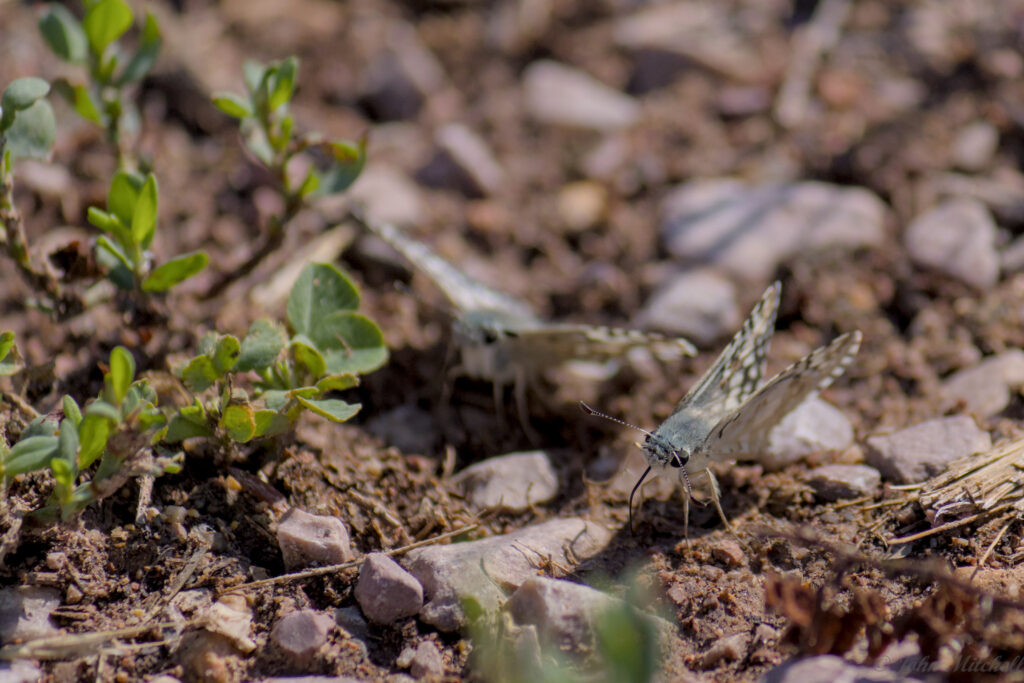
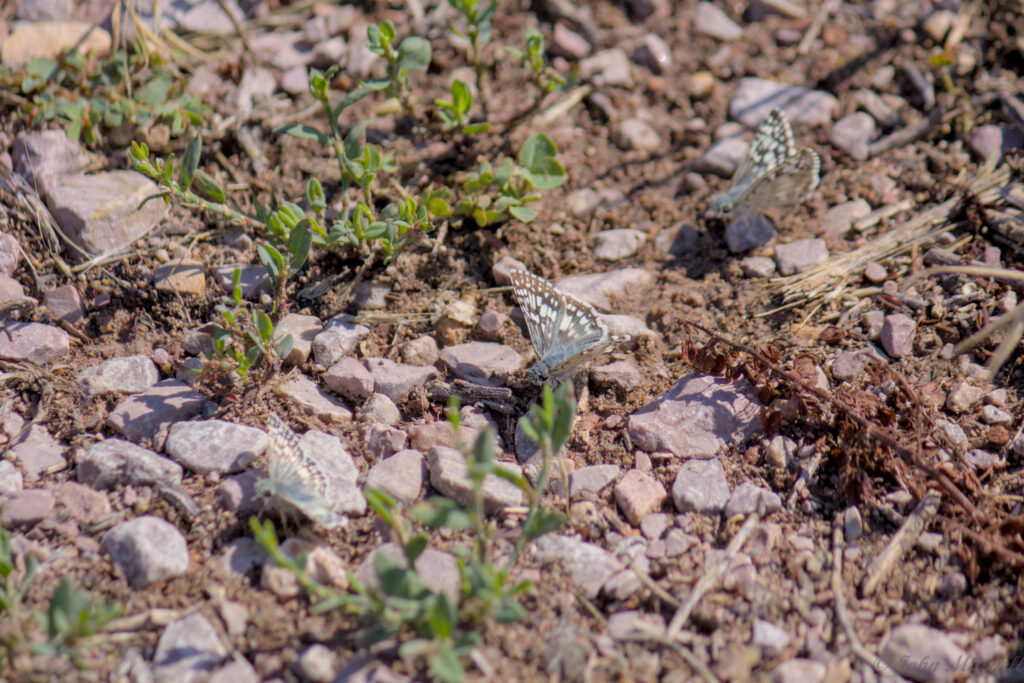
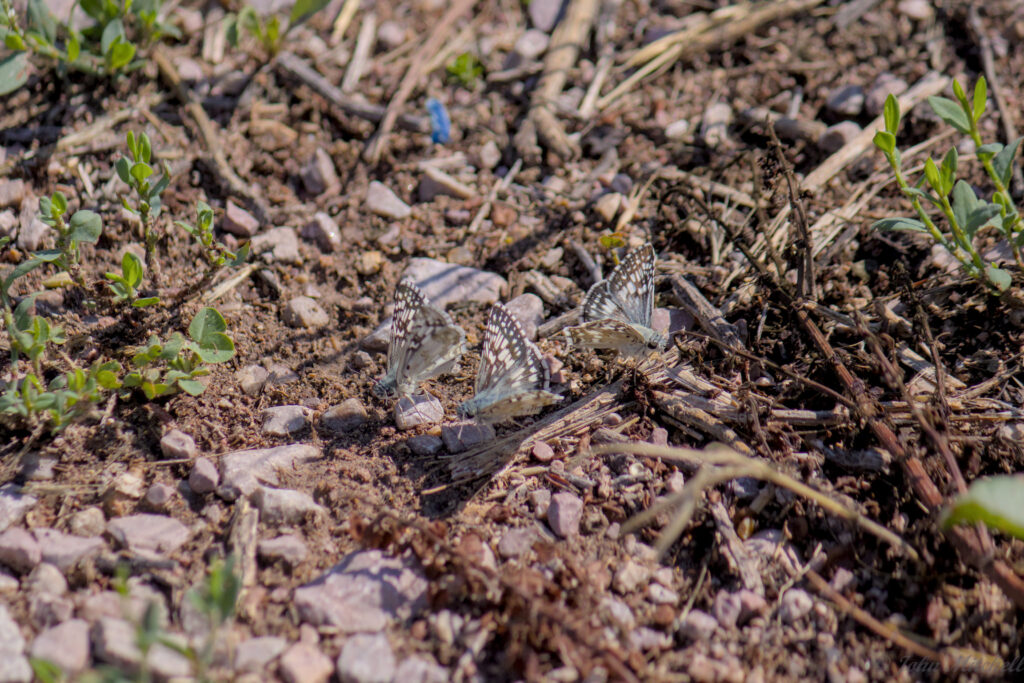
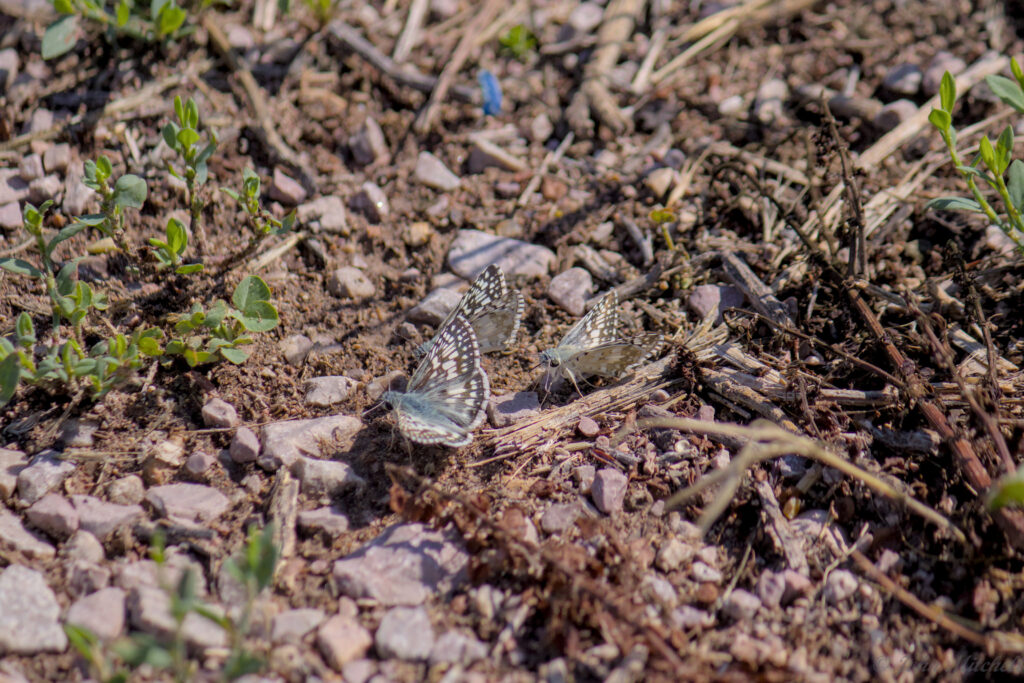
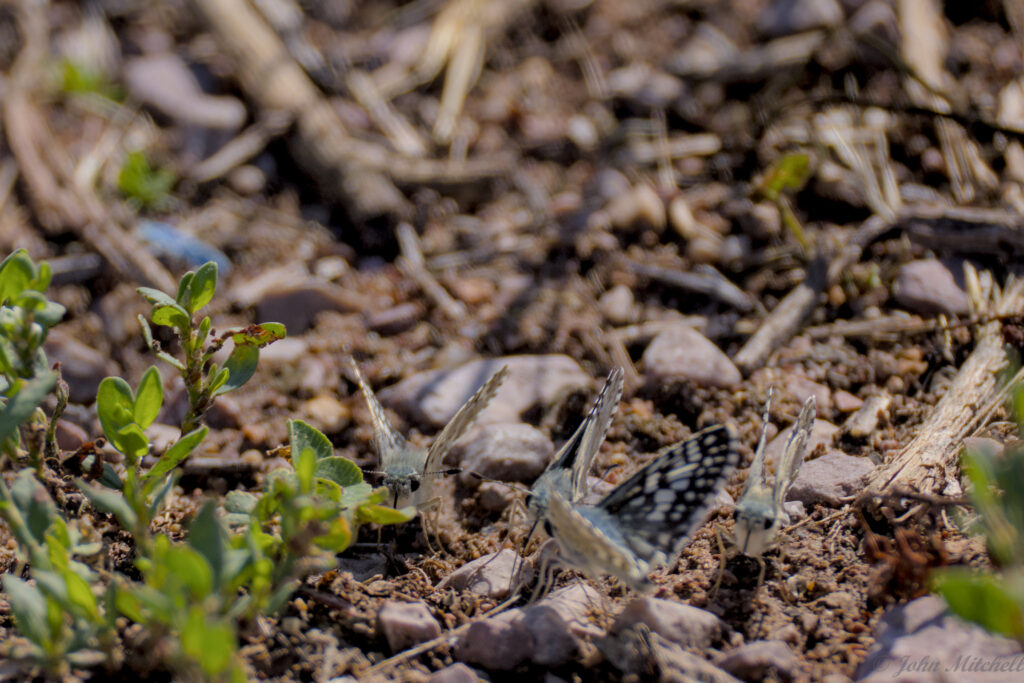
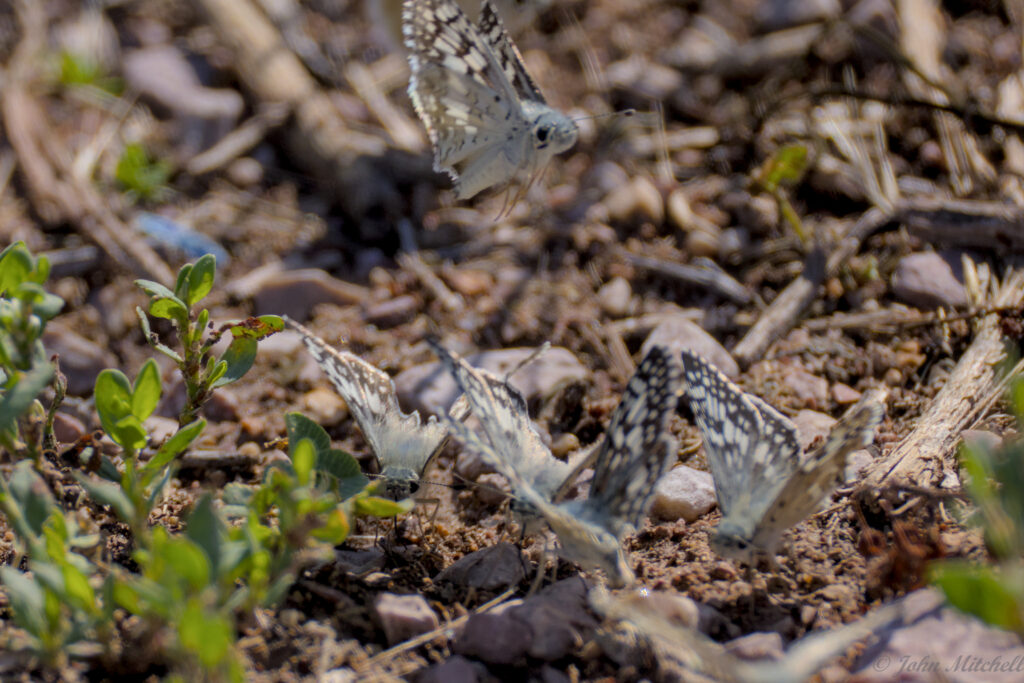
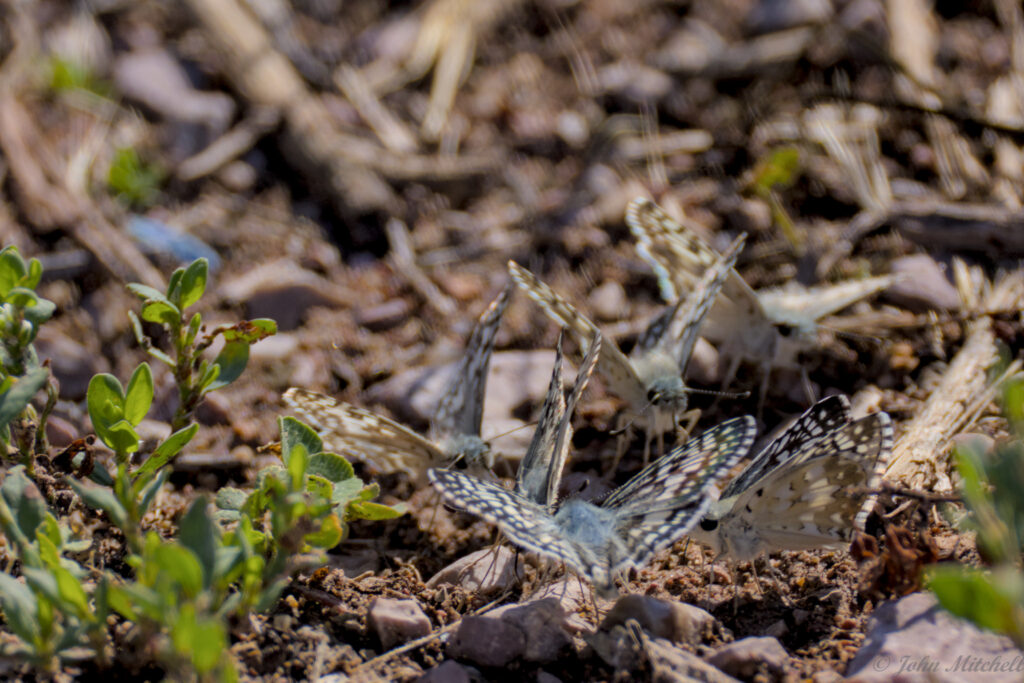
The first four pictures were taken with a 55 mm – 250 mm “Cheap” lens at f/5.6, and the last three were taken with the 200 mm – 800 mm “Expensive” Lens at f/9.0. The images at f/5.6 were significantly crisper, but both sets of images required manual fine tuning to focus on their little bug eyes.

The trail ran 1.5 miles along an old dirt and gravel road to the edge of the national lands. The trail is fairly level and smooth, but it has gentle elevation changes that are mostly downwards. It passes through lightly forested hills and fields. The description of the trail was accurate, there were a lot of birds, butterflies, and wildflowers.
Shortly into the trail, a Western Tanager almost flew into our faces. It stopped, briefly, on a branch near us, but it quickly flew away. Western Tanagers are probably the prettiest songbird that we have successfully photographed.
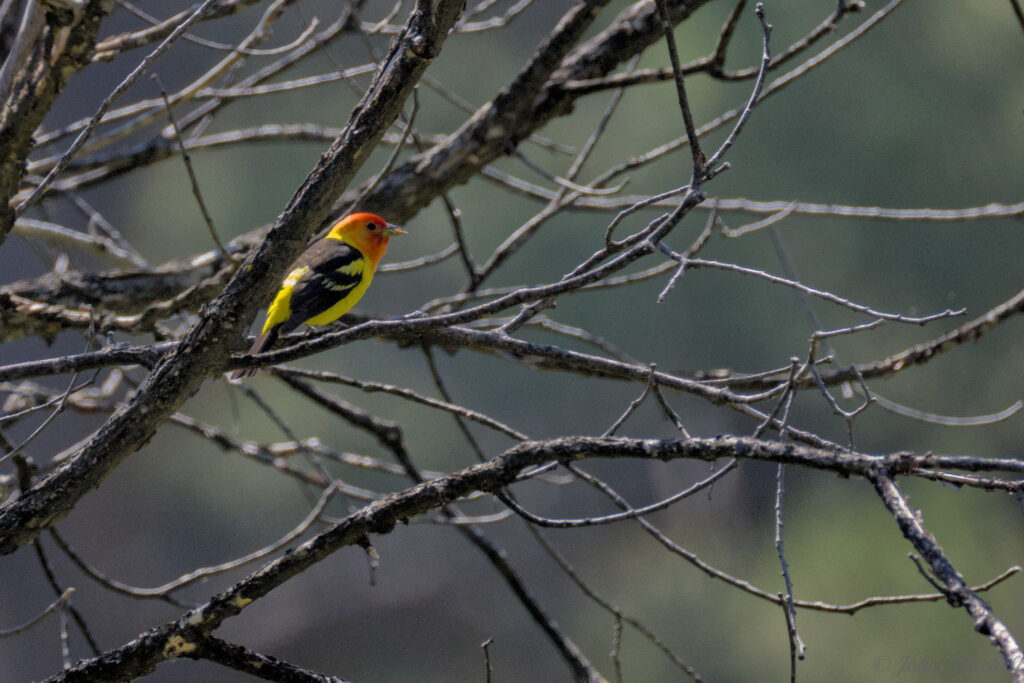
We walked by some delicious looking, possibly poisonous, berries.
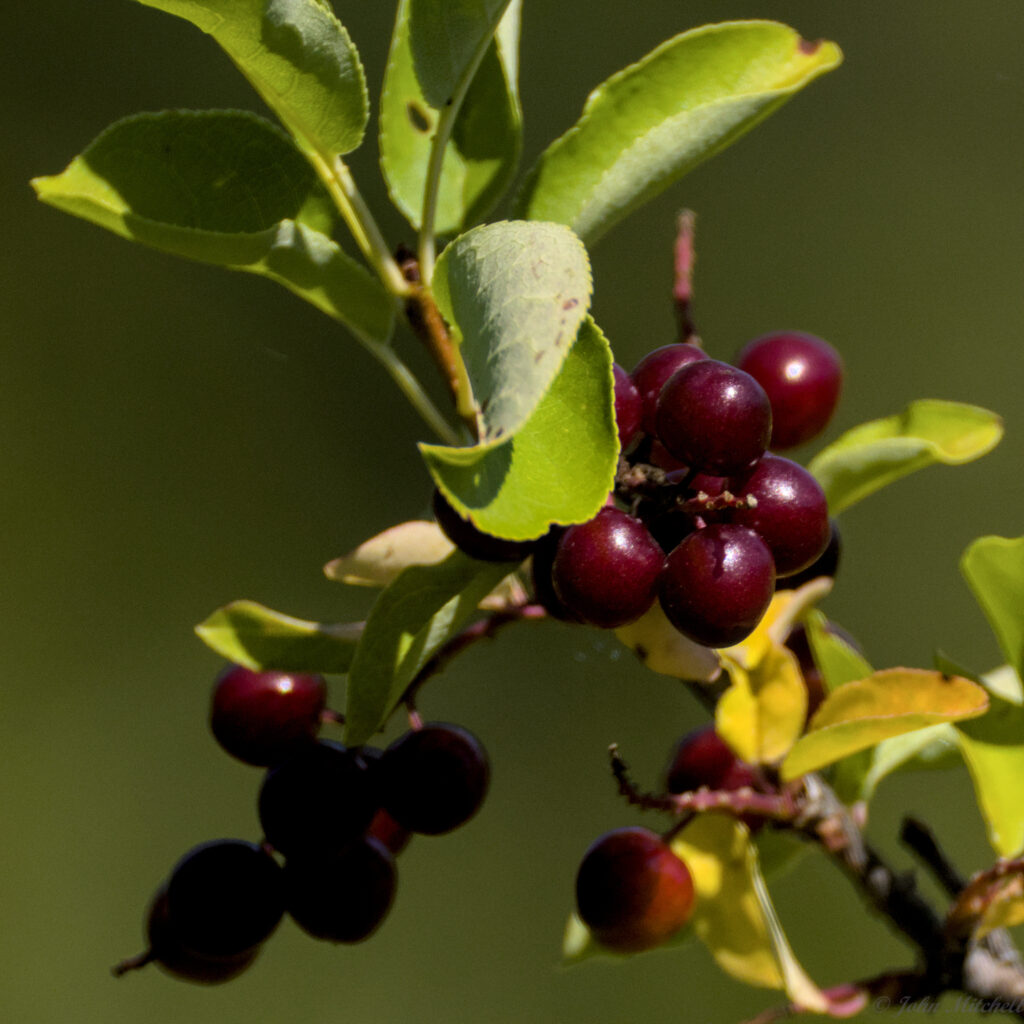
The general guideline is that 90% of white (,green, and yellow), 50% of red, 10% of purple (, blue, and black), and only 1% of aggregate berries are poisonous. If you you have to eat an unknown berry, go for the aggregate ones. This rule is very rough. The actual ratio of poisonous to non-poisonous berries can vary by locality, so never randomly eat a berry without knowing what it is or testing it for safety. After some research, it looks like this might be Chokecherry fruit. It is edible, but it tastes better with the tannins cooked out.
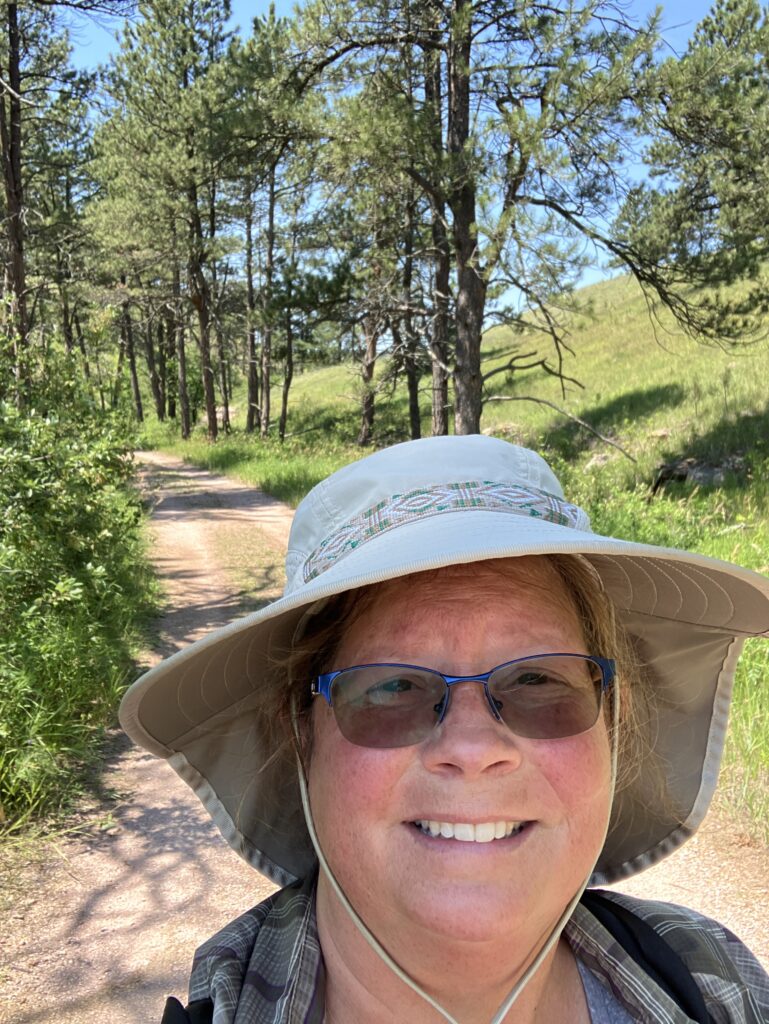
Near the Chokecherry, we heard a bird song that was not familiar, so Kate pulled out the Merlin app. The app claimed that it was a Spotted Towhee. We had heard and seen Green-tailed Towhee in Yellowstone, but that one was too elusive for photos. The Spotted Towhee looks a similar to a small Black-headed Grosbeak.
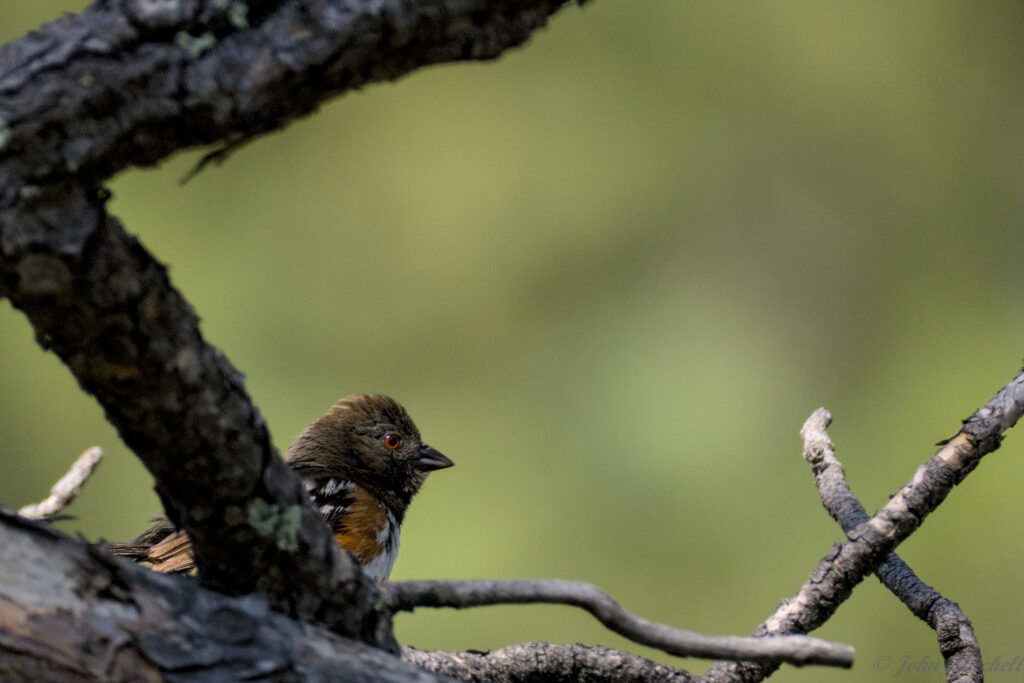

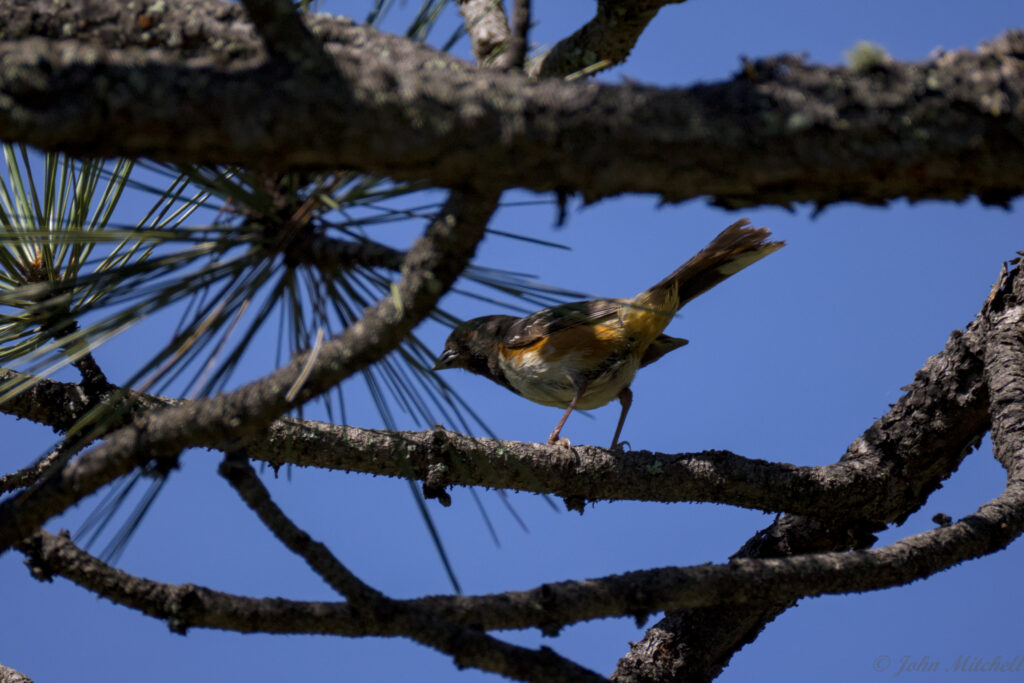
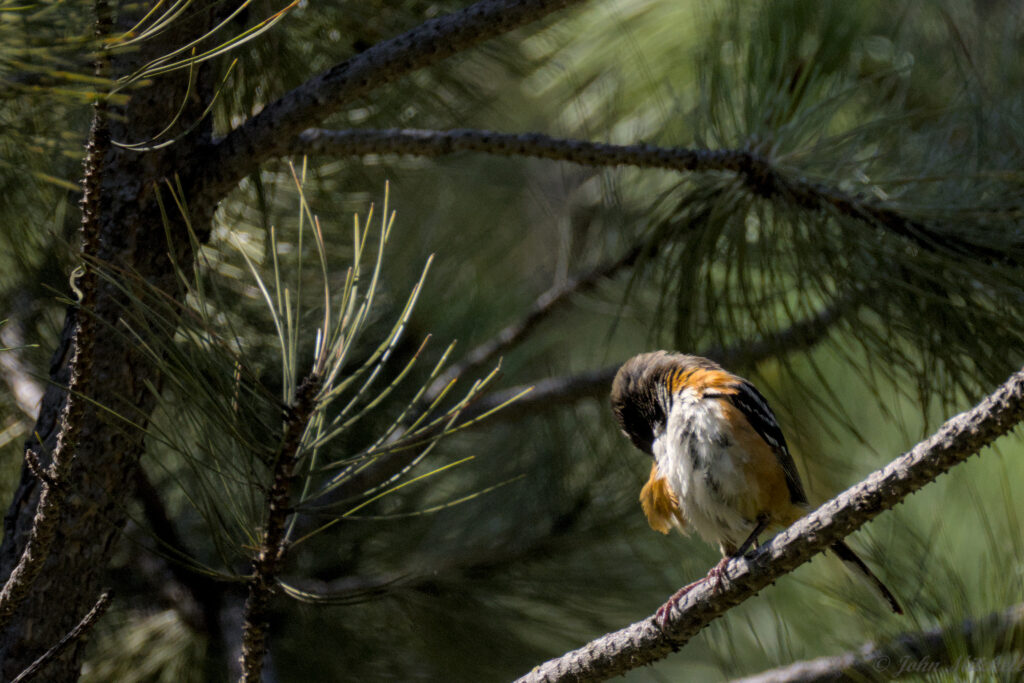
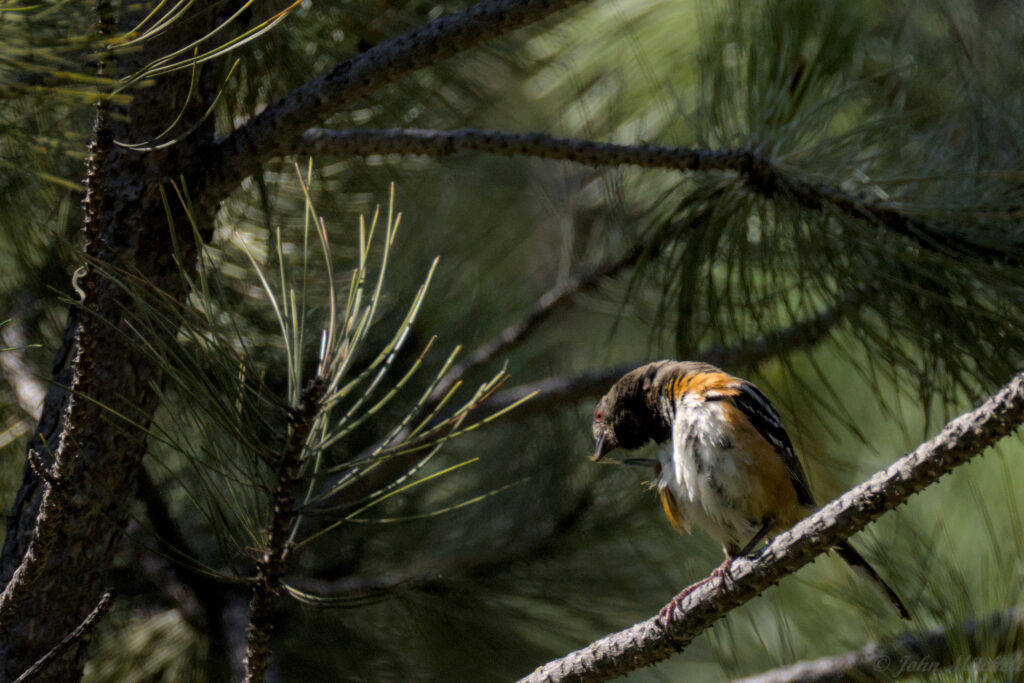
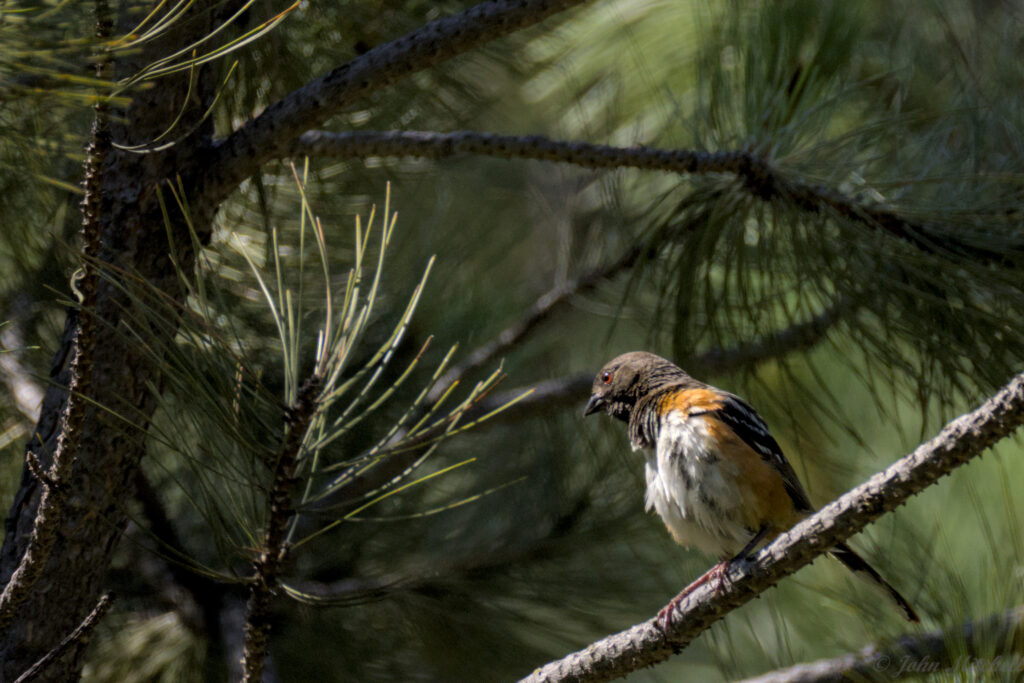
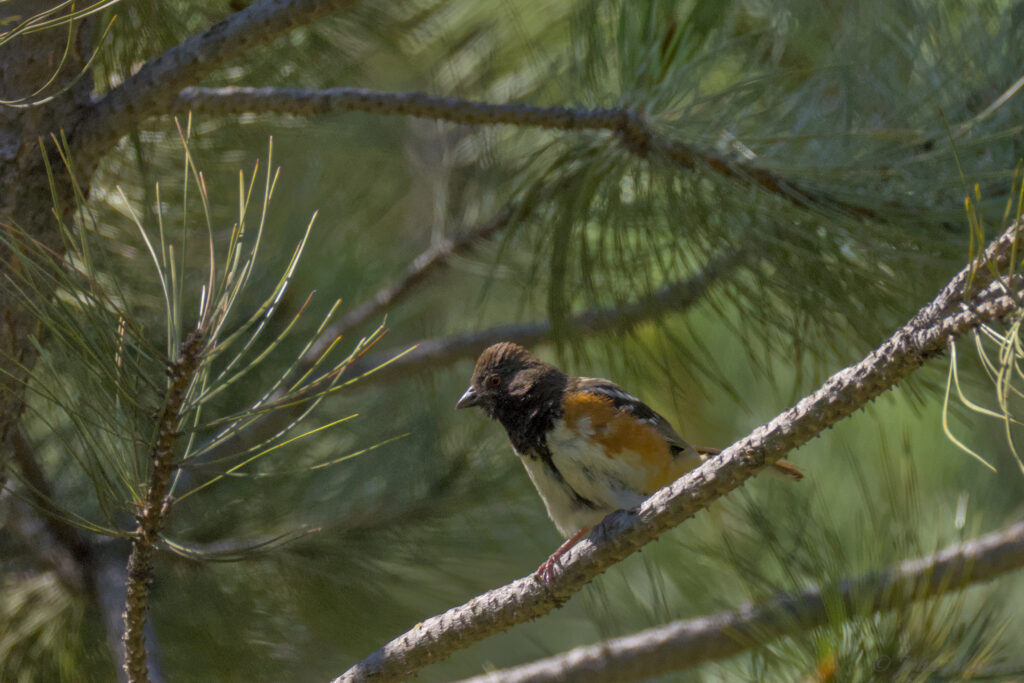
A little further on, we saw a Pewee or, maybe, a Flycatcher. It was so small that the camera did not want to focus on it.
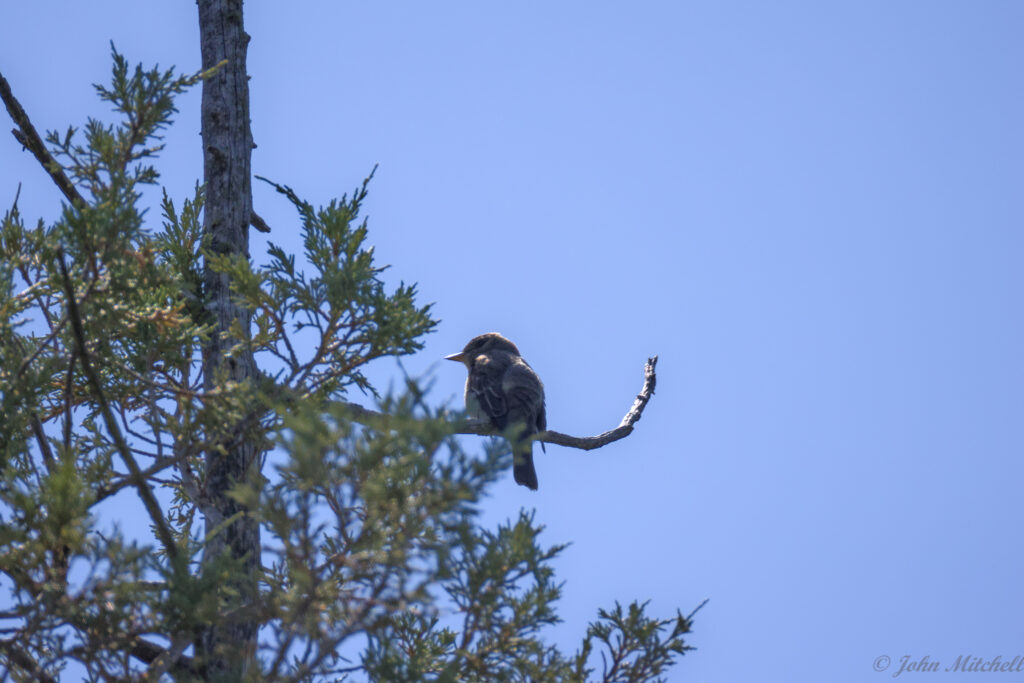

About a mile into the hike, the forest thinned out and there were more fields. At this point, most of the subjects of interest were bugs and flowers. There was a good assortment of butterflies. This first one appears to be a Red Admiral Butterfly.
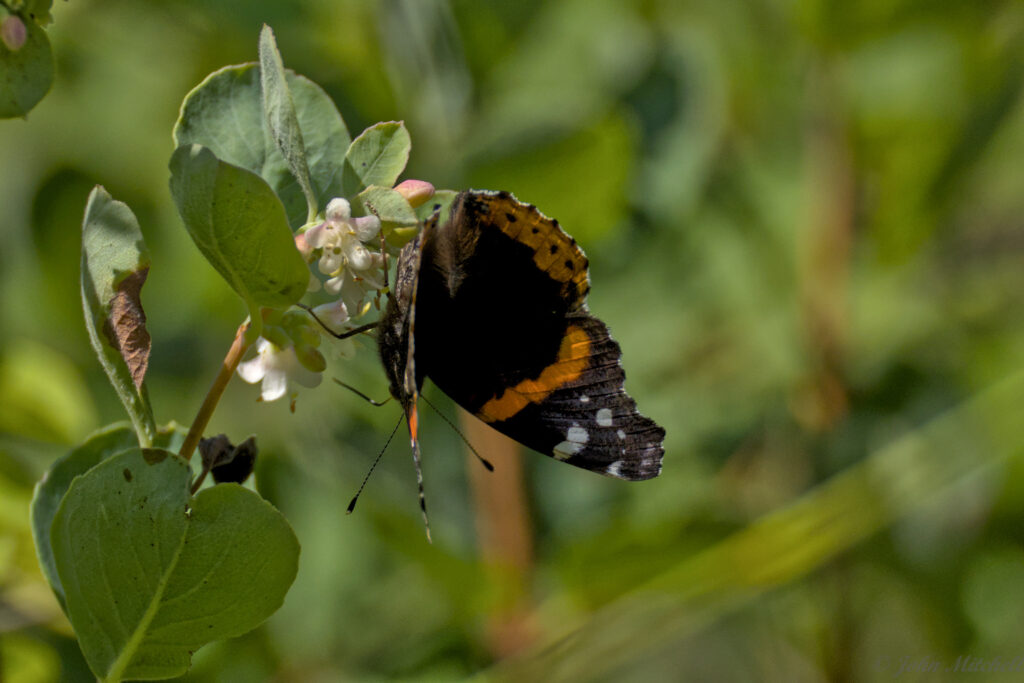
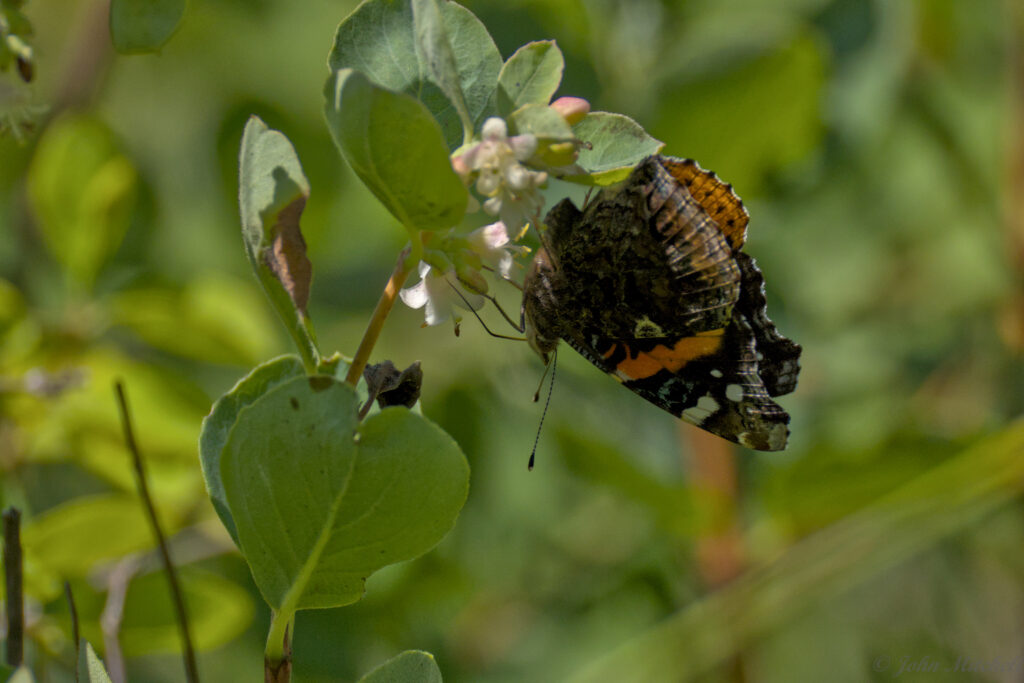

On the side of the trail, John found a Bumblebee on a Thistle flower.

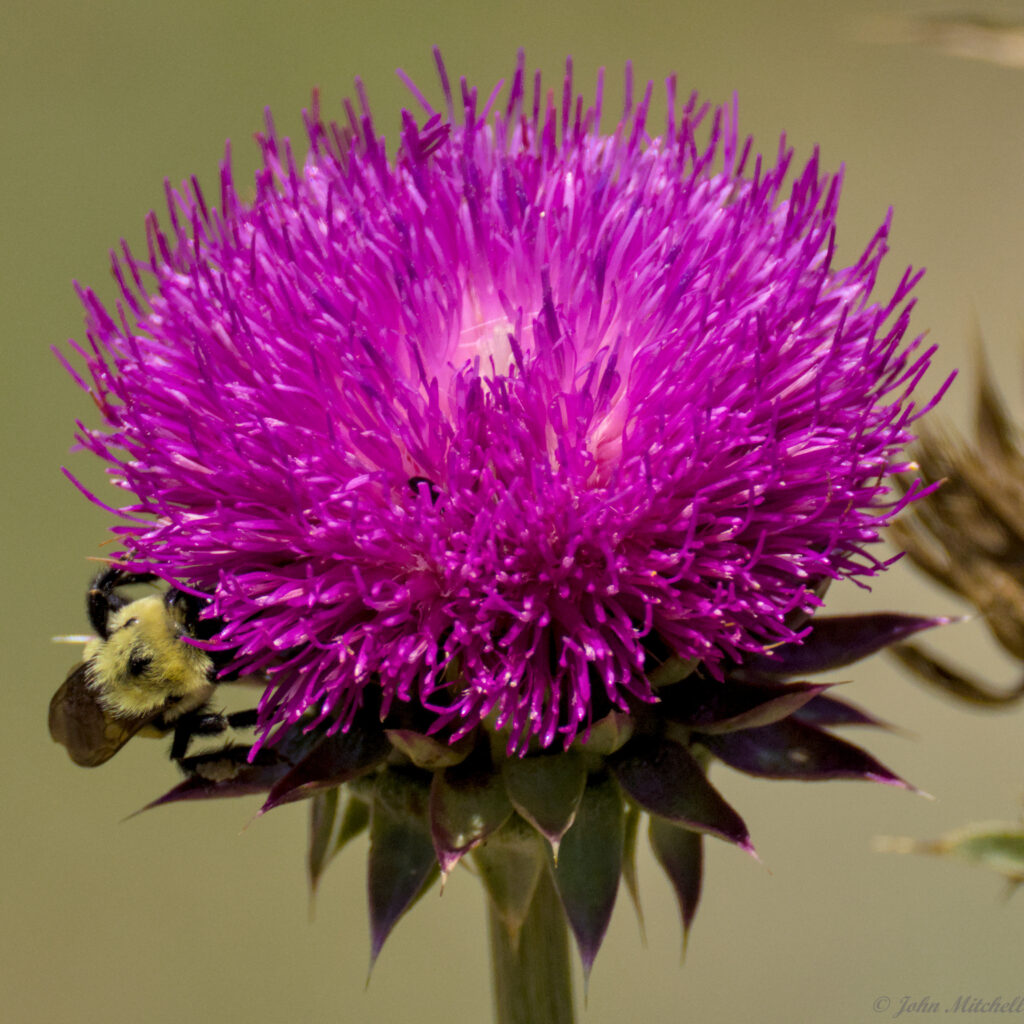
While Kate found a Plains Lubber Grasshopper sitting on the trail.
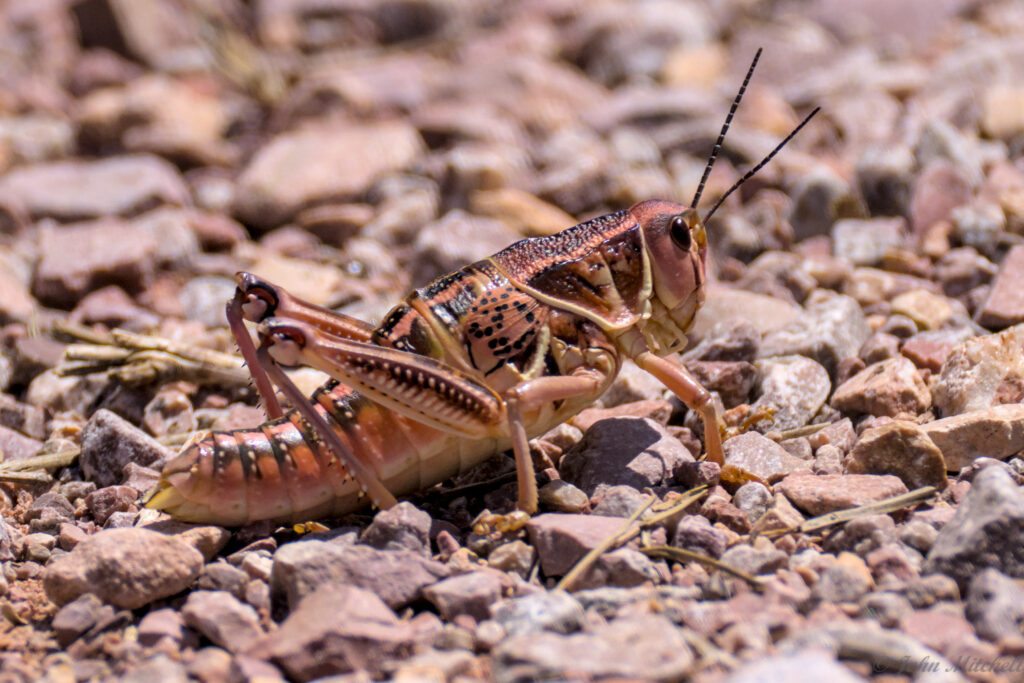
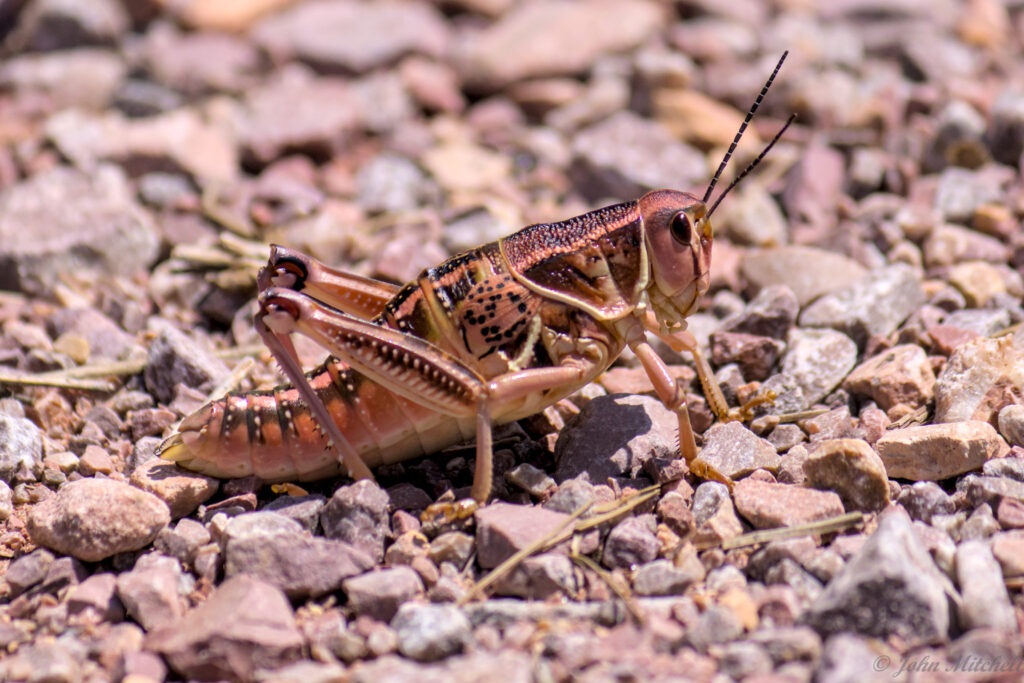
The second might be an Variegated Fritillary Butterfly. We found this one in one of the larger fields with Prairie Coneflowers.

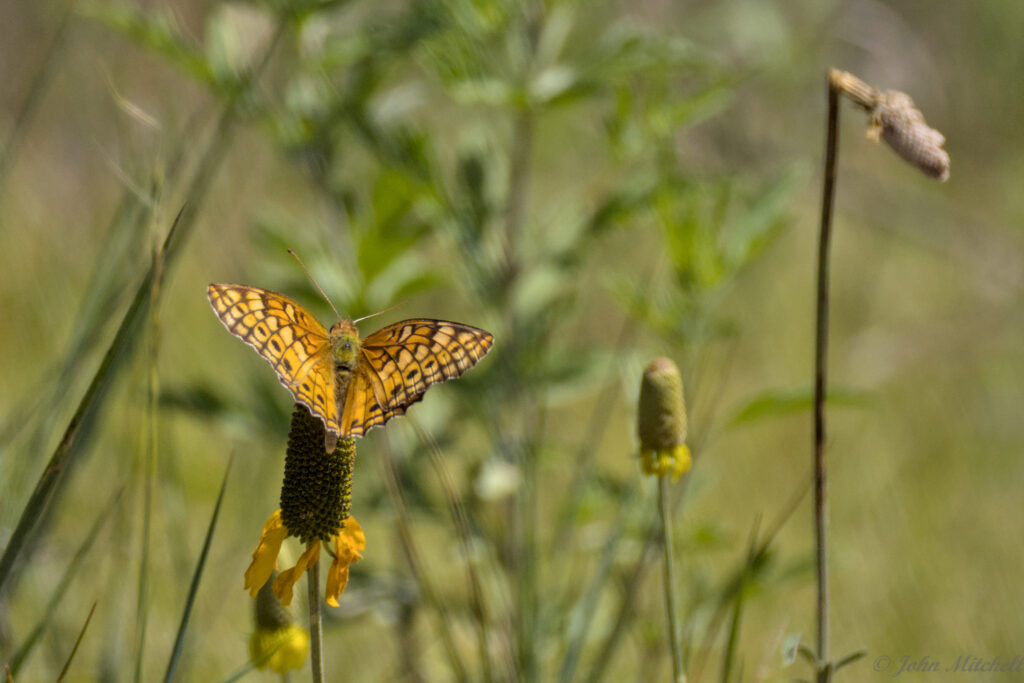

Near the end of the trail, we ran across this butterfly. It might be an Aphrodite or Atlantis Fritillary Butterfly, but the underwing looks too dark.
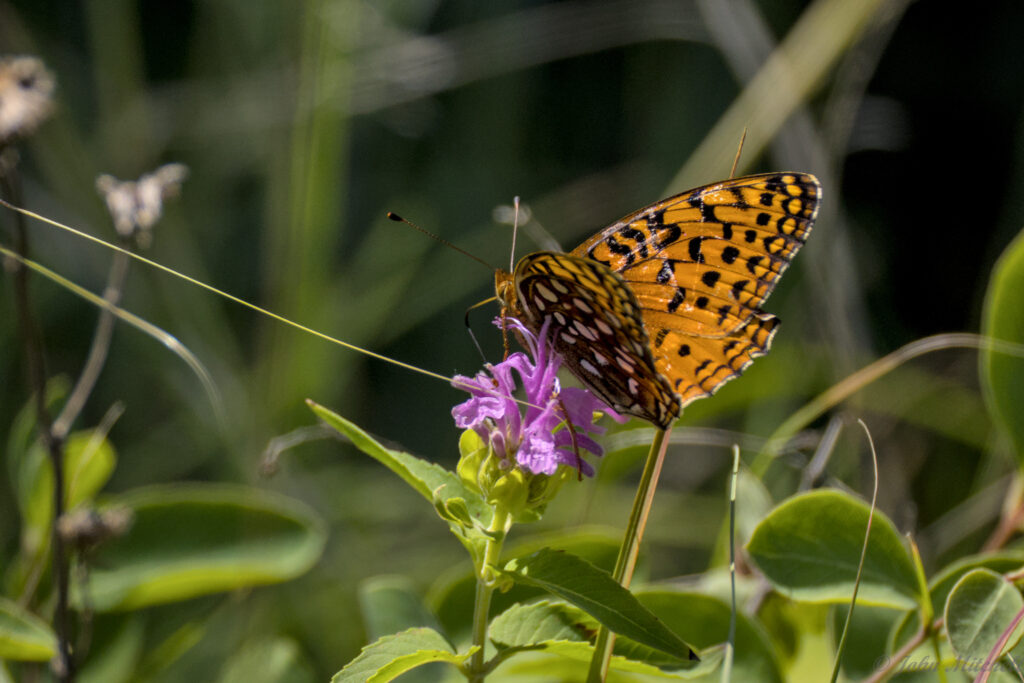
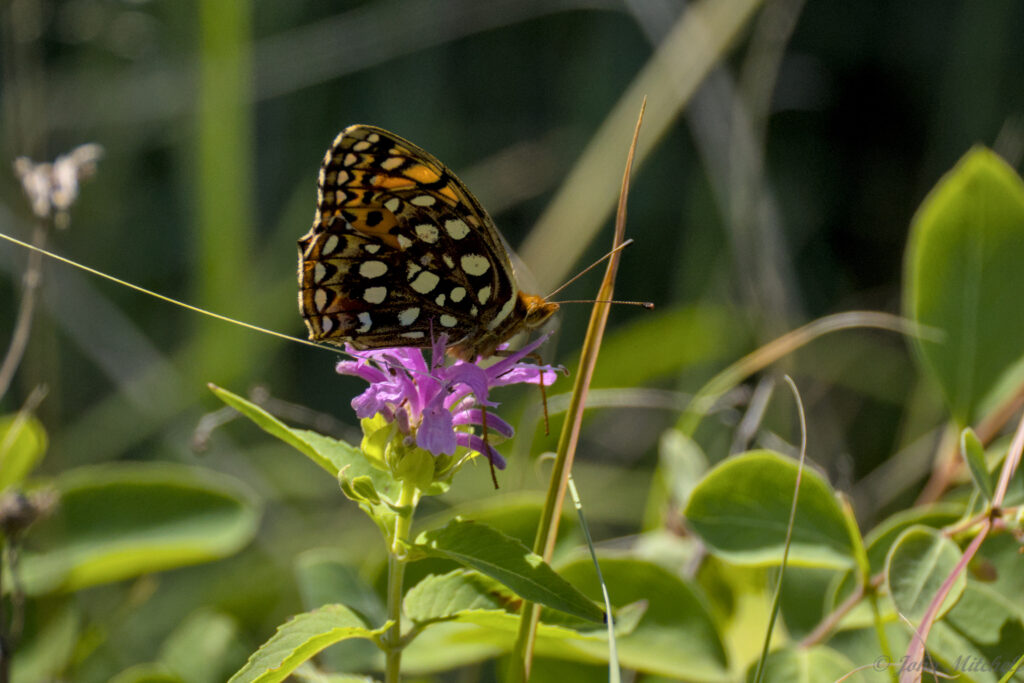
The dirt road just dead ends at a fence marking the end of the national lands. On the hike back out, Kate saw some birds in the tree on the right, and John saw a bird jumping for berries on the hill to the left. It looked like it might be a small grouse, but it appears to be a juvenile American Robin. Once the image was brightened, the side colors looked more orange than yellow.
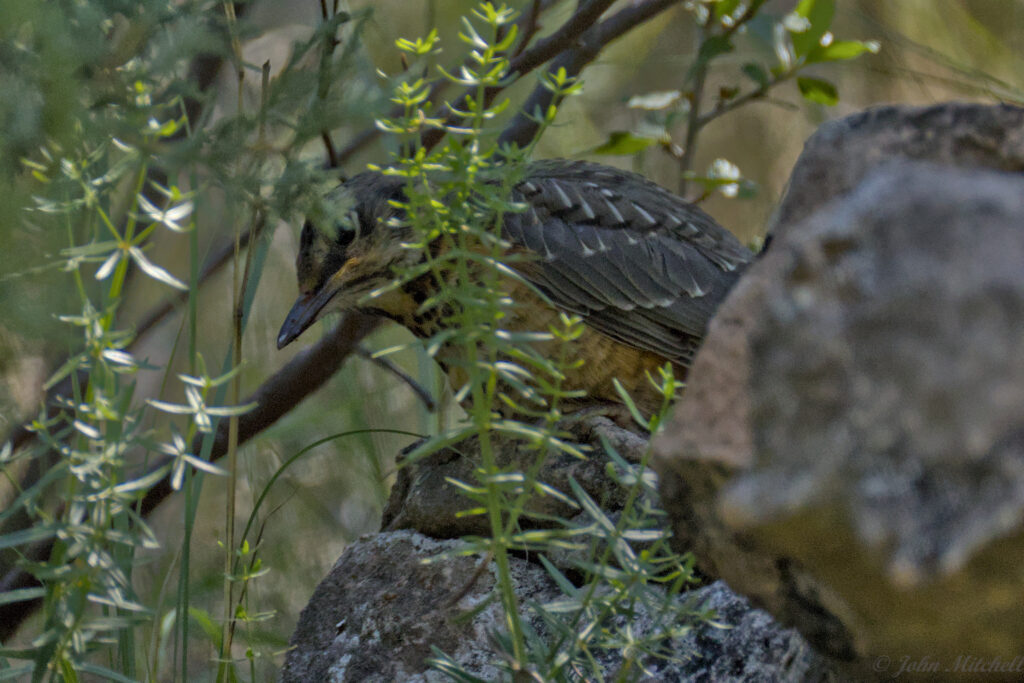
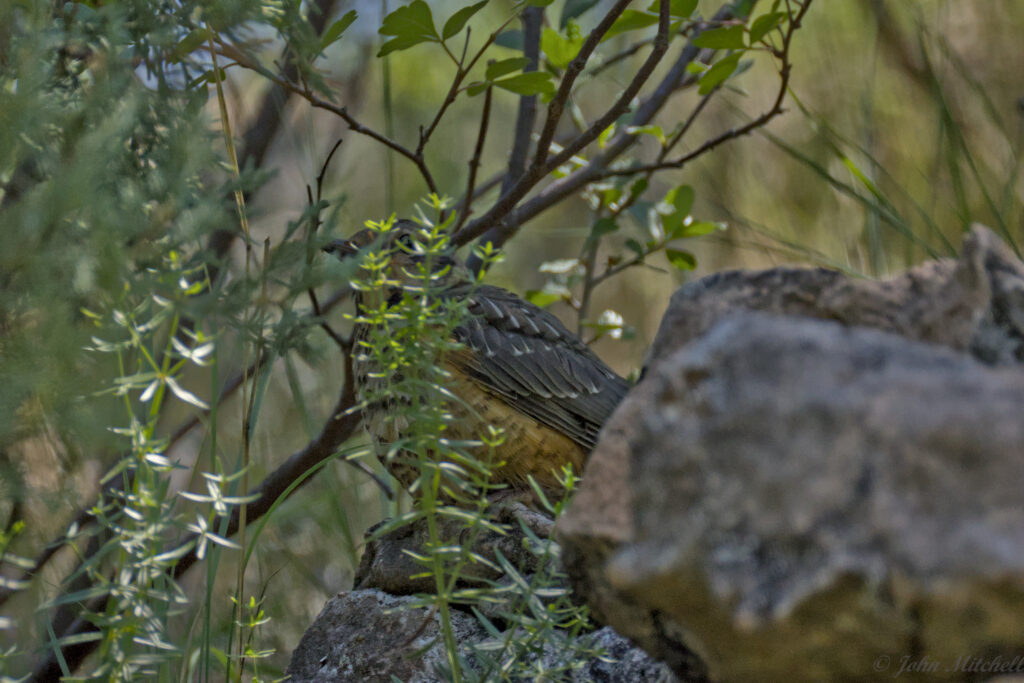
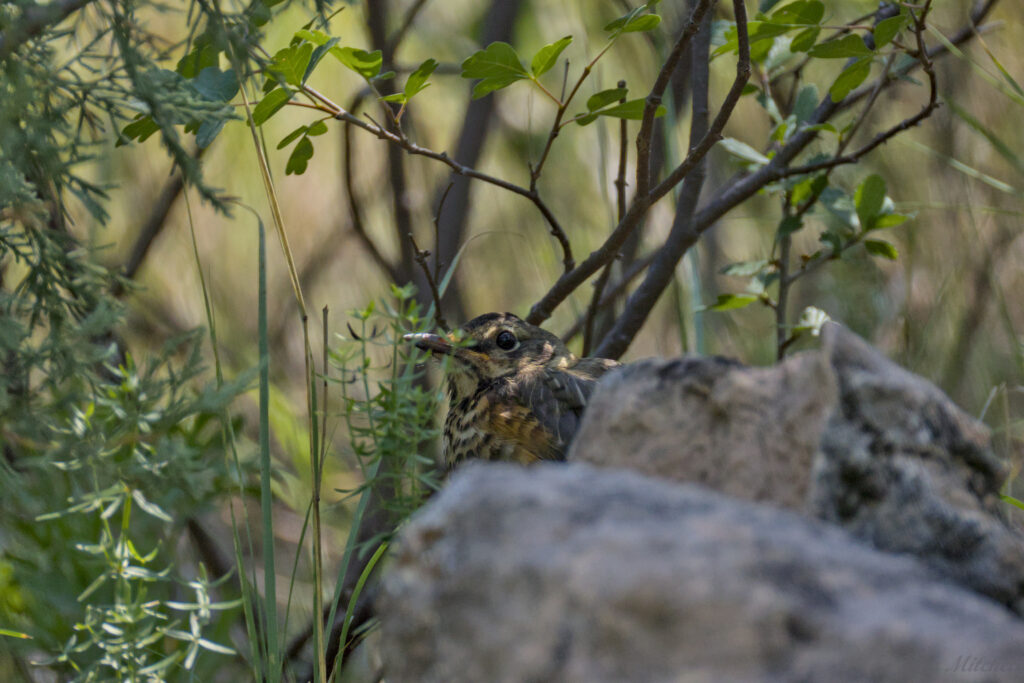
And again, we heard some rough guttural cooing, like a pigeon with a sore throat. The Rock Pigeon was still on the side of the cliff, but now it was with a friend. We saw the pigeon on the hike in, but it was heavily shaded. The video and most of the pictures were taken on the hike back to the car.
You can tell it is a Rock Pigeon based on the music it listens to. It looked a lot like a Street Pigeon, just like you might see in New York. At least one source claims that Street Pigeons are feral domesticated Rock Pigeons. Who knew? (Apparently, the biologists, in case you were wondering.)
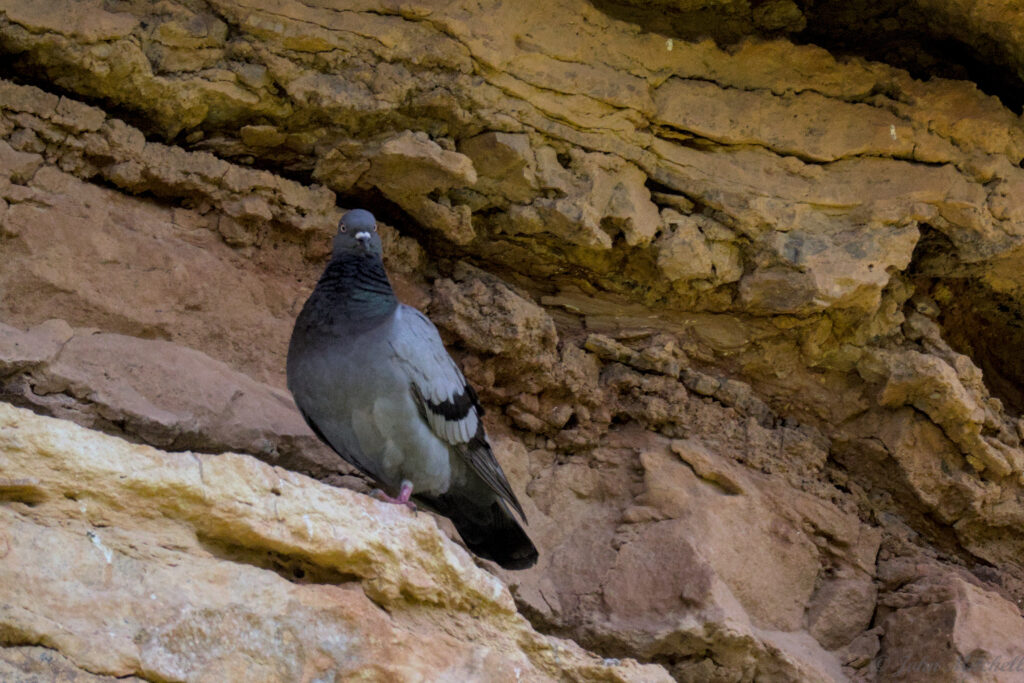
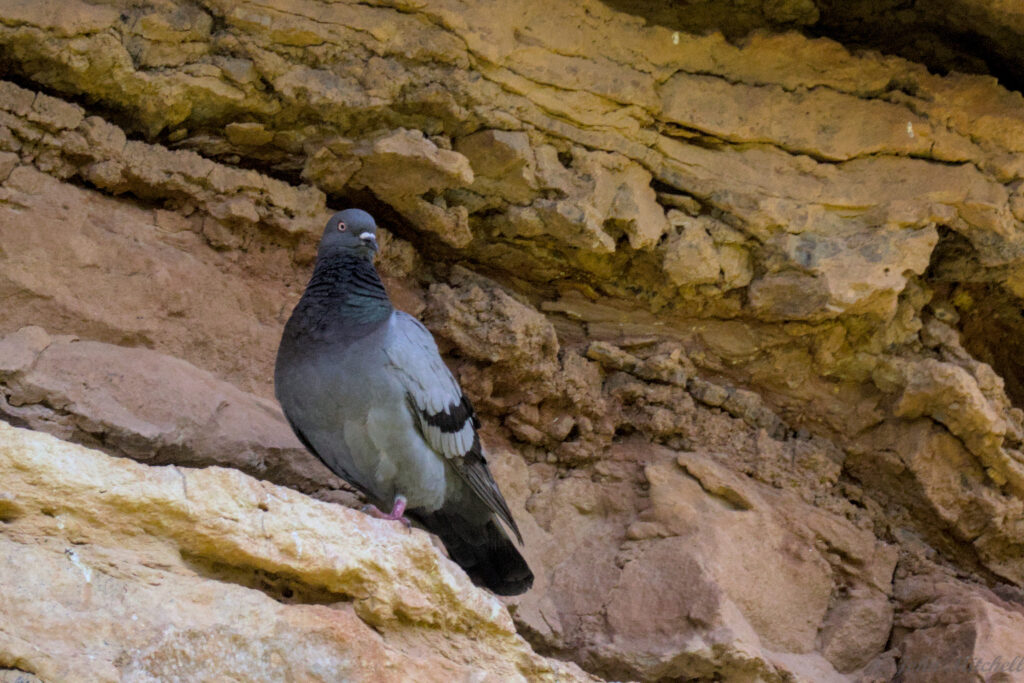
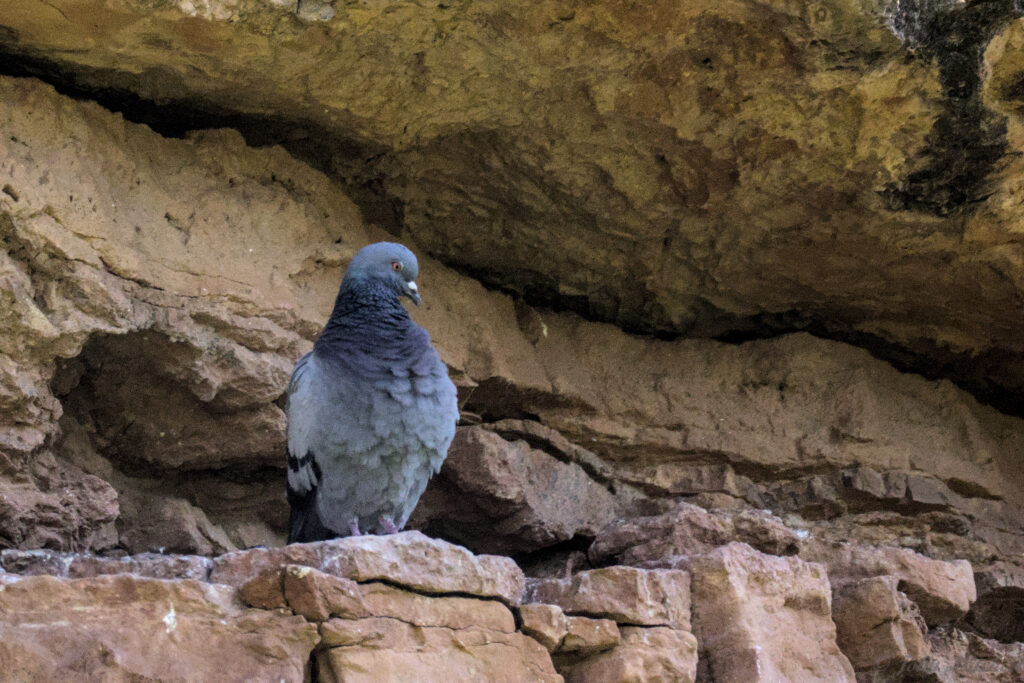
The Rock Pigeons were on cliffs like these.


As we were leaving Wind Cave National Monument, Kate said that the Bison herd has probably moved on. Do you want to guess what happened next? (Spoiler: Bison Jam). Yup, we ran into a Bison Jam. Cars half-in and half-out of the road. Cars stopped in the road. Bison standing in the road. It was chaos; it reminded us of our stay in Yellowstone. The picture does not do the Bison herd justice.
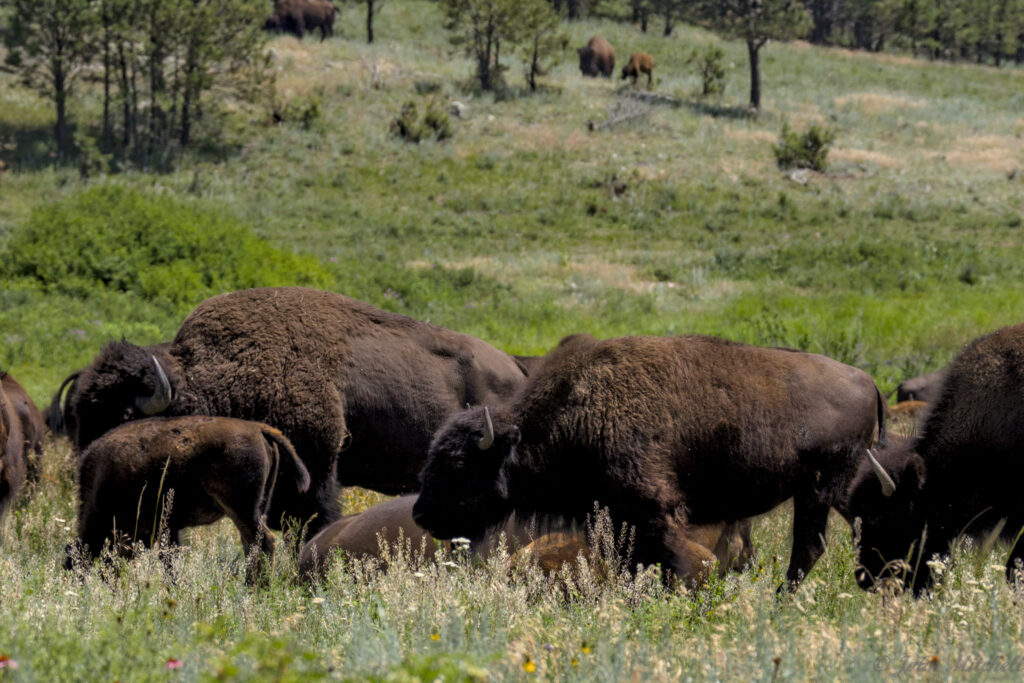
The Bison Jam video panorama makes it more clear. This is a 90 degree view pointing out the side of the car to the back from just after we made it to the other side of the jam. The resolution was scaled to 720 because it is a long video.
We made it back to the RV safely, but possibly, with slightly elevated blood pressure from the Bison Jam.
Kate decided that she didn’t want to cook for supper and that Pizza sounded good. The city of Custer is only about 10 miles away (though it takes 20 to 30 to get there) had a Pizza Hut. On the way to Pizza Hut, a large herd of big horn sheep was in the field about 1/2 miles from the campground. This was the largest group of big horn sheep we have seen at the same time and this herd had many babies.


2 responses to “Wind Cave Canyon Hiking Trail”
enjoyed the panoramic view of bison, I’d like to taste one.
If you move to South Dakota, you can shoot the Sandhill Cranes, when they are noisy. Depending on what you read, they taste like pork or “Ribeye of the Sky”.